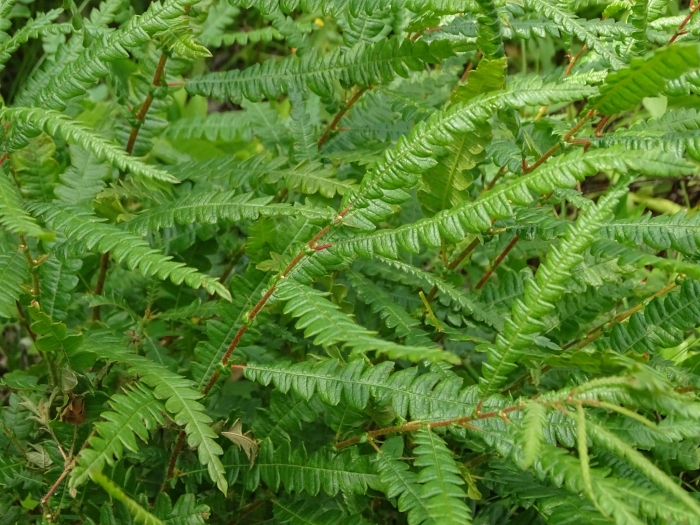Sweet Fern
(Comptonia peregrina)
Sweet Fern (Comptonia peregrina)
/
/

Shirley Zundell
CC BY 4.0







































































Estimated Native Range
Summary
Sweet Fern is valued for its aromatic foliage and is often used in naturalistic plantings, as a ground cover, and for erosion control due to its ability to thrive in poor soils. It is also used in traditional medicine and as a culinary herb. This plant is low-maintenance, requiring minimal water once established and preferring well-drained, acidic soils. It can tolerate full sun to part shade. While generally pest-free, it can suffer from leaf spot diseases in humid conditions. Sweet Fern is not known for aggressive roots or invasiveness, making it a good choice for gardeners looking for a hardy, native species.CC BY-SA 4.0
Plant Description
- Plant Type: Subshrub, Shrub
- Height: 2-4 feet
- Width: 4-8 feet
- Growth Rate: Slow
- Flower Color: N/A
- Flowering Season: Spring
- Leaf Retention: Deciduous
Growth Requirements
- Sun: Full Sun, Part Shade
- Water: Low
- Drainage: Fast, Medium
Common Uses
Bank Stabilization, Bird Garden, Butterfly Garden, Deer Resistant, Drought Tolerant, Edible*Disclaimer: Easyscape's listed plant edibility is for informational use. Always verify the safety and proper identification of any plant before consumption., Fire Resistant, Fragrant, Groundcover, Low Maintenance, Salt Tolerant
Natural Habitat
Dry, sandy soils, open woodlands, and along forest edges
Other Names
Common Names: Fern-Gale, Sweet-Fern, Comptonie Voyageuse, Comptonie À Feuilles D’Asplénie
Scientific Names: , Comptonia peregrina, Myrica asplenifolia, Comptonia aspleniifolia, Comptonia peregrina var. aspleniifolia, Comptonia asplenifolia, Comptonia peregrina var. peregrina, Myrica peregrina, Comptonia comptonia, Liquidambar asplenifolia
GBIF Accepted Name: Comptonia peregrina (L.) Coult.